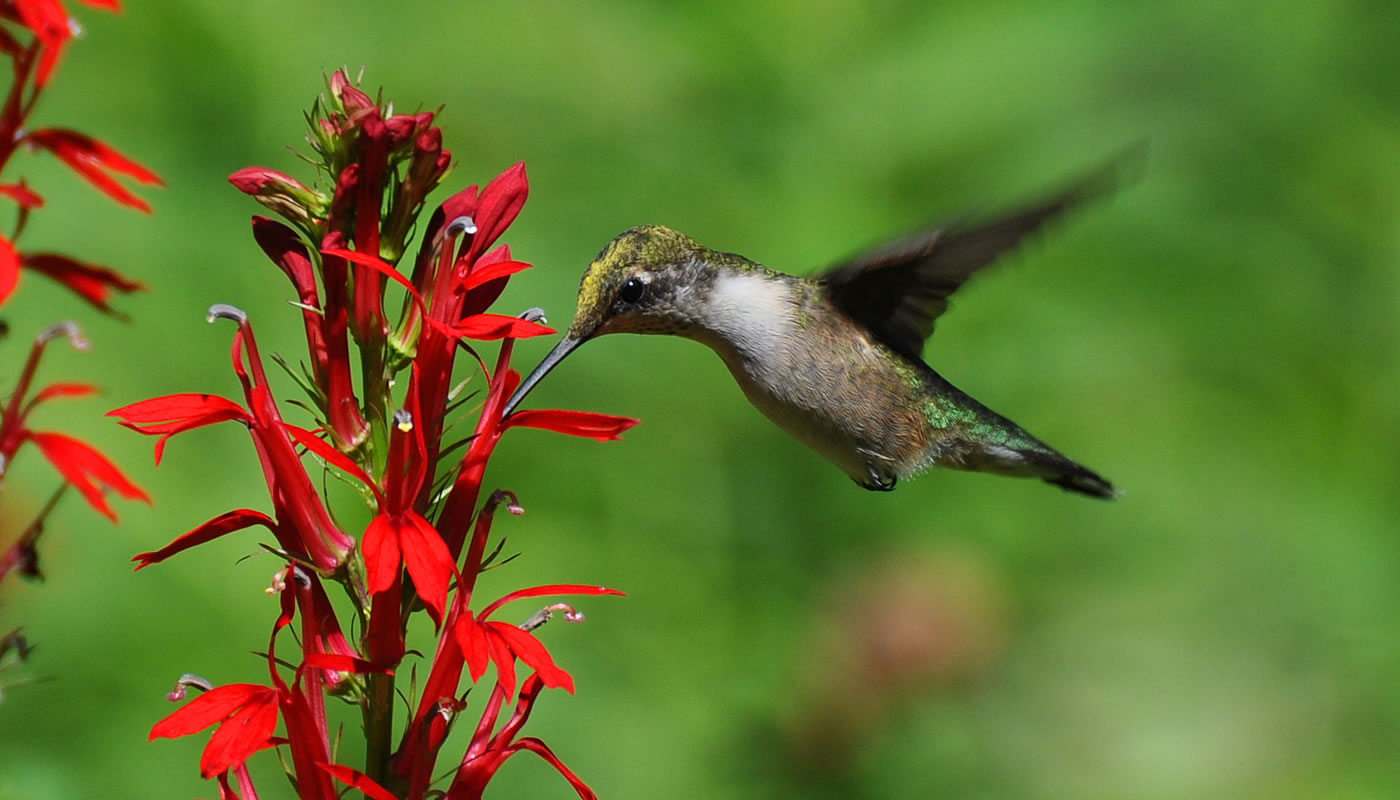The sight of a hummingbird flitting between flowers can delight even the most jaded among us, but a closer look at these birds reveals even more reason for amazement. In our area we have one native species: the ruby-throated hummingbird (Archilochus colubris).
This tiny bird (measuring only 2.8 to 3.5 inches and weighing a mere 2 to 6 grams) takes an incredible journey each year to make its summer home in Cook County. During the winter, ruby-throated hummingbirds are found from Central Mexico south to Central America to Panama, and also seen in south Florida. Their movement north begins in January and they arrive at the northern coast of Mexico’s Yucatán Peninsula by late February. The birds spend some time in the Yucatán Peninsula fueling up for their perilous flight across the Gulf of Mexico. They will nearly double their weight with stored fat to complete the trip of 500 miles or more in 18 to 22 hours. Once they reach the U.S. coast, northern migration continues at a rate of about 20 miles a day.
Ruby-throated hummingbirds reach our area around the middle of April and nesting begins in May. The males can be seen defending patches of flowering plants and preforming aerial displays to attract females. After mating, the female does all the work—constructing the nest, incubating the eggs and caring for the young. In late July the males begin their migration back south, followed by the females and young hummers.
During summer, when you can find them maneuvering among the tubular flowering plants they prefer, listen for the characteristic sound that gives hummingbirds their name. Flapping their wings about 80 times per second, the flight feathers make the loud humming and buzzing as the birds hover and insert their long slender bills into a flower. The tongue pumps the flower’s nectar into the mouth by lapping at an astonishing 20 times per second. More than half of their diet is nectar, but they also prey on small arthropods like insects and spiders.
To attract hummers to your yard, plant flowers that are tubular and red to orange in color and place a few nectar feeders around the garden. Fill the feeders with a one to four solution of sugar to water and keep the feeder clean and the sugar water fresh—food coloring is not necessary. You will be rewarded by the flitting bright colors and hums and knowing that you helped get these amazing birds ready for a long flight south.
Article by Leslie Decourcey, naturalist aide, Sagawau Environmental Learning Center.

